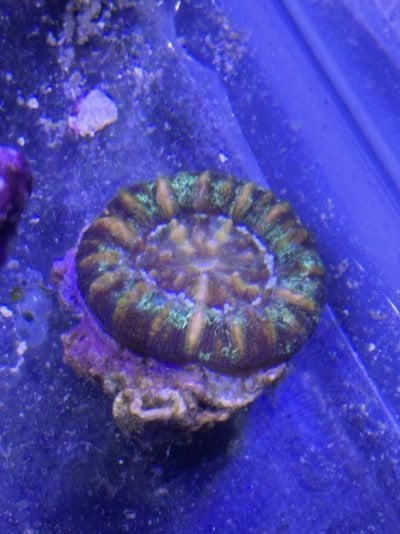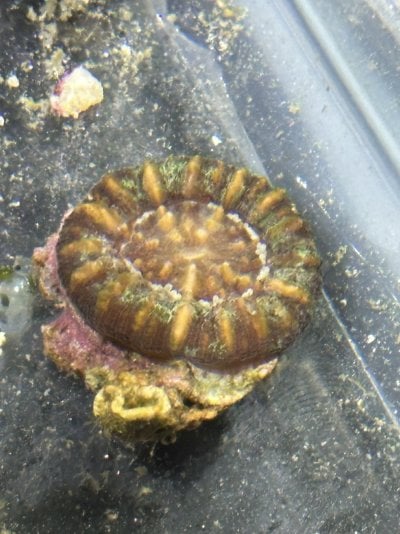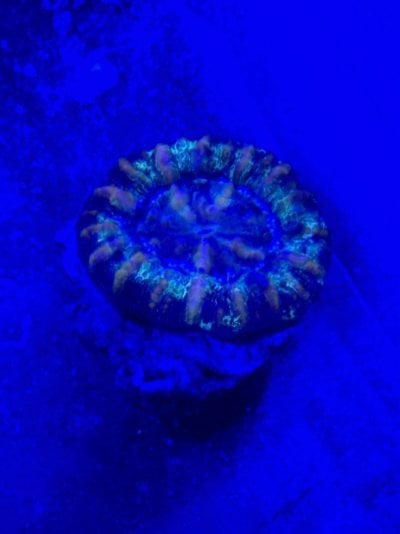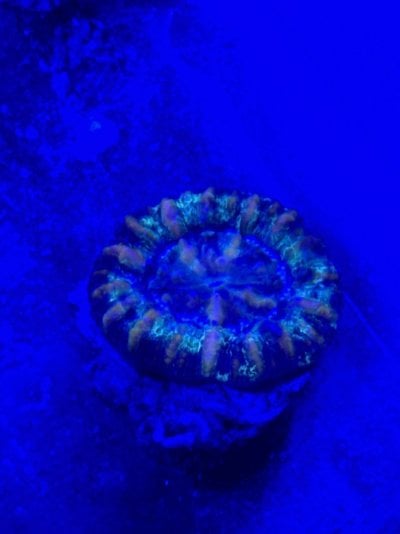Navigation
Install the app
How to install the app on iOS
Follow along with the video below to see how to install our site as a web app on your home screen.
Note: This feature may not be available in some browsers.
More options
You are using an out of date browser. It may not display this or other websites correctly.
You should upgrade or use an alternative browser.
You should upgrade or use an alternative browser.
Button scoly ID
- Thread starter mikeymushrooms
- Start date
- Tagged users None
There are no variety names for different button scolies, each one is totally unique like with other meat corals. Any "names" you see are just made up by vendors as clickbait.
cf. Micromussa pacifica
Button scolys were IDed as Micromussa pacifica by the hobby's taxonomy nerds such as Jake Adams and Joe Rowlett once that species got described, but this identification is dubious. First of all, no specimens from Western Australia, the locality where button "scolys" are collected from, were sampled in the study that described Micromussa pacifica. Second of all, there are notable differences in color between M. pacifica and button scolys: M. pacifica are usually a deep red or green, often with white radiating accents on the outer coenosarc, while button scolys usually range from red to yellow, often with "weak vescicles" denoting primary septa. The West-Australian population of button scolys have yet to be studied and likely represents an undescribed species within Lobophylliidae, separate from M. pacifica. Until molecular/genetic analysis is done on button scolys, we cannot definitively ID them.
Button scolys were IDed as Micromussa pacifica by the hobby's taxonomy nerds such as Jake Adams and Joe Rowlett once that species got described, but this identification is dubious. First of all, no specimens from Western Australia, the locality where button "scolys" are collected from, were sampled in the study that described Micromussa pacifica. Second of all, there are notable differences in color between M. pacifica and button scolys: M. pacifica are usually a deep red or green, often with white radiating accents on the outer coenosarc, while button scolys usually range from red to yellow, often with "weak vescicles" denoting primary septa. The West-Australian population of button scolys have yet to be studied and likely represents an undescribed species within Lobophylliidae, separate from M. pacifica. Until molecular/genetic analysis is done on button scolys, we cannot definitively ID them.
Thanks for the info about them! Super informativecf. Micromussa pacifica
Button scolys were IDed as Micromussa pacifica by the hobby's taxonomy nerds such as Jake Adams and Joe Rowlett once that species got described, but this identification is dubious. First of all, no specimens from Western Australia, the locality where button "scolys" are collected from, were sampled in the study that described Micromussa pacifica. Second of all, there are notable differences in color between M. pacifica and button scolys: M. pacifica are usually a deep red or green, often with white radiating accents on the outer coenosarc, while button scolys usually range from red to yellow, often with "weak vescicles" denoting primary septa. The West-Australian population of button scolys have yet to be studied and likely represents an undescribed species within Lobophylliidae, separate from M. pacifica. Until molecular/genetic analysis is done on button scolys, we cannot definitively ID them.
None of what we call "Scolys" in the hobby are actually Scolymia. True Scolymia are West-Atlantic endemics. What we call "Scolymia" in the hobby are multiple different species of solitary, donut-like Lobophylliids, most of which were formerly in the genus Scolymia. Most of the "Scolys" in the hobby are Homophyllia australis, which are closely related to bowerbankis.Thanks for the info about them! Super informativeso technically they are not true scolyomia?
Similar threads
- Replies
- 2
- Views
- 194























